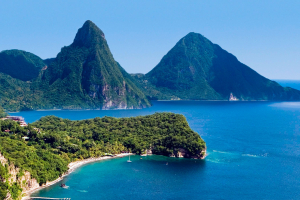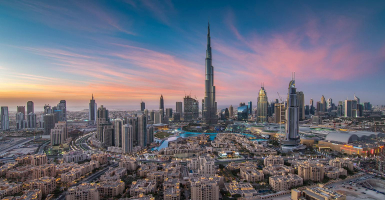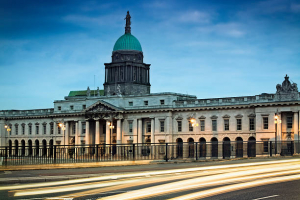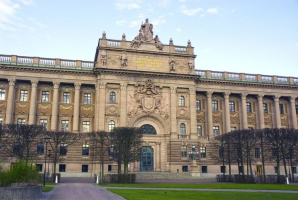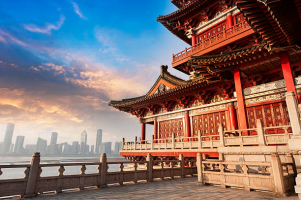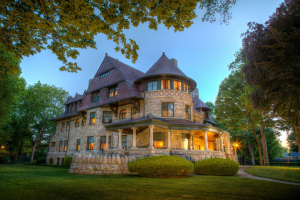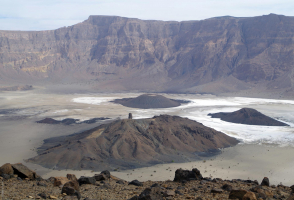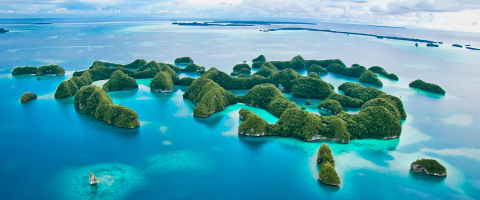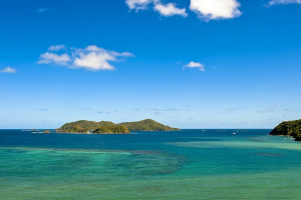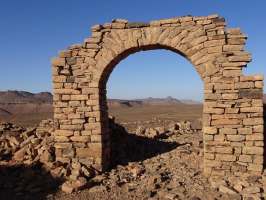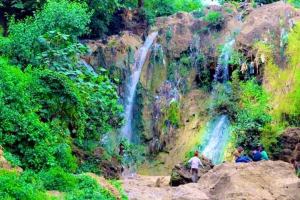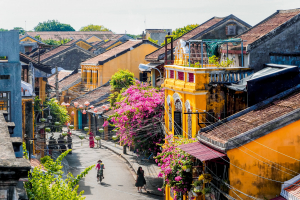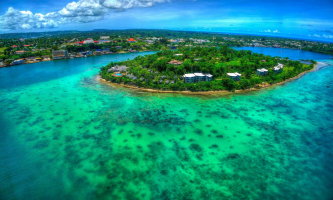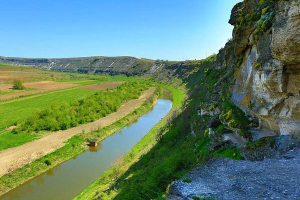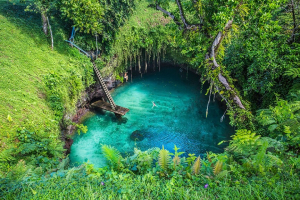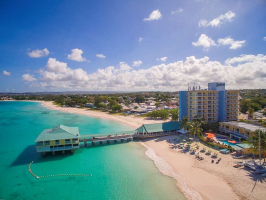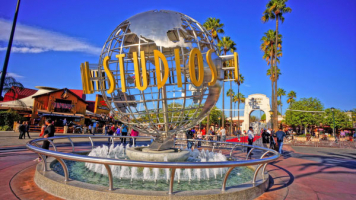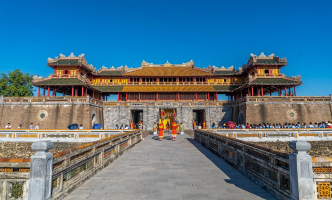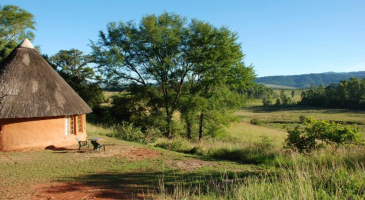Top 10 Must See Attractions In Serbia
Serbia features a lot of picturesque tourist destinations, as well as cultural and historical monuments, hot springs, hunting fields, and other tourism ... read more...amenities. Serbia used to be a crossroads of numerous civilizations, each with its own personality, art, architecture, and culture. Serbia is a country with a distinct history, culture, natural beauty, and racial diversity. Check the top places to visit in the region and plan your next adventure today.
-
The Church of Saint Sava is a stunning sight, whether you are an Orthodox Christian or not. This Belgrade landmark is without a doubt one of the most stunning structures in the Balkans, a difficult distinction to earn. You'll notice that it's not just massive in size, but also spectacular in terms of whole experience.
So strap in and prepare to discover a little bit about its rich and complex history, as well as its presence in the former Yugoslavia. You'll discover why Vogue Magazine dubbed it "Eastern Europe's Sagrada Fámlia!"
The main dome of the church stands 134 meters tall and is capped by a 12 meter golden cross. There are an additional 18 crosses on the smaller domes.
In addition, when the inside of the greatest dome is covered with the mosaic of Christ Pantocrator, each of his eyes will be 3m wide!There are a total of 49 church bells. The heaviest bell weighs in at a whopping 6 tons! Visit the church around noon to hear the day's longest bell ring.
The church can accommodate 10,000 people at any moment, which is commonly the case during Christmas and Easter services.- Etrance fees: Free of charge
- Opening time: 09:00 am - 06:00 pm (preferred time is11:00 am - 03:00 pm)
- Recommended duration: 30 Mins
- Contact Number: +381-113348958
- Address: Svetosavski Square | Karadjordje's Park, Vracar, Belgrade 011, Serbia
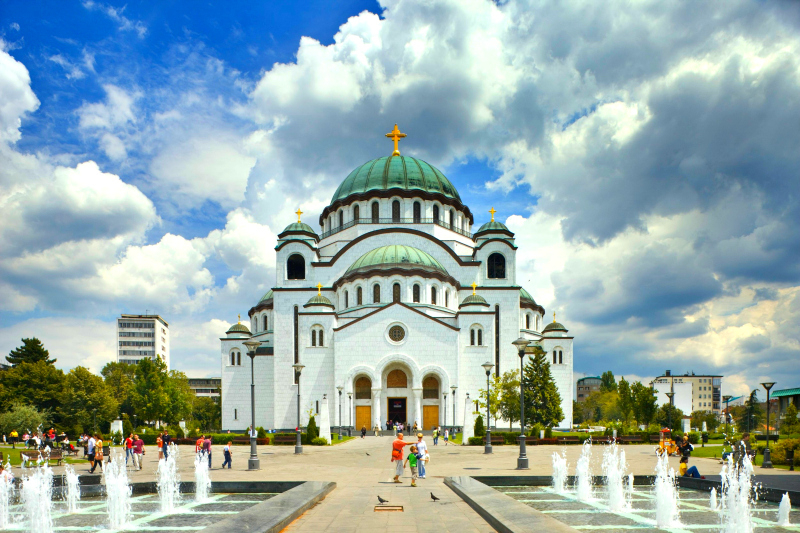
serbia.com 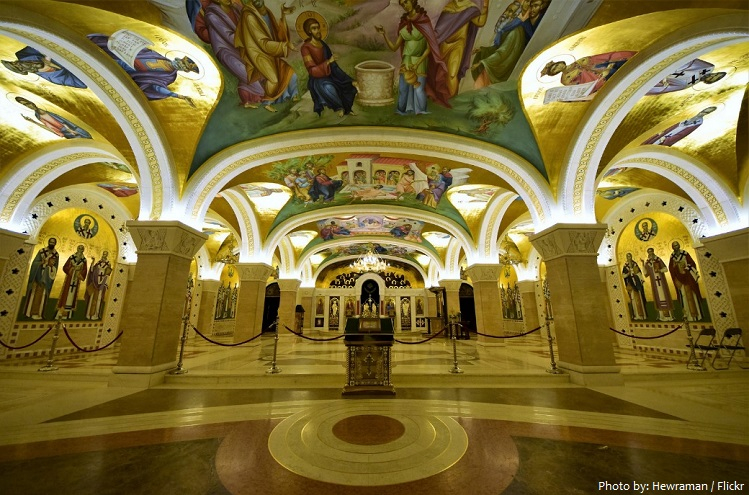
justfunfacts.com -
Studenica Monastery is a 12th-century Serbian Orthodox monastery in central Serbia, 39 kilometers (24 miles) southwest of Kraljevo and 40.9 kilometers (25.4 miles) east of Ivanjica. It is one of the largest and wealthiest Serb Orthodox monasteries in the world.
The monastery was built in 1190 by Stefan Nemanja, the founder of the medieval Serb kingdom. The defensive walls of the monastery house two churches: the Church of the Virgin and the Church of the King, both of which are made of white marble. The monastery is well recognized for its collection of Byzantine-style fresco paintings from the 13th and 14th centuries.
Studenica was designated a Monument of Culture of Exceptional Importance in 1979, and it is now protected by the Republic of Serbia. In 1986, UNESCO included the Studenica monastery to the list of World Heritage Sites.
- Opening time:
Summer (April 1 – October 31)7.00am – 7.00pm
Winter (November 1 – March 31)8.00am – 4.00pm
On Sundays and Feast days: Matins at 6.30am,Holy Liturgy at 8.00am
Other days:Matins at 5.30am,Holy Liturgy at 6.45am
Vespers in the winter period starts at 5.00pm and in the summer time at 6.00pm. - Entrance fees: EUR 2,00
- Offers: Guided Tours on request.
- Contact: + 381 (0) 36 543 6050 and + 381 (0) 64 464 7492
- Address: Unnamed Road, Brezova 36343, Serbia
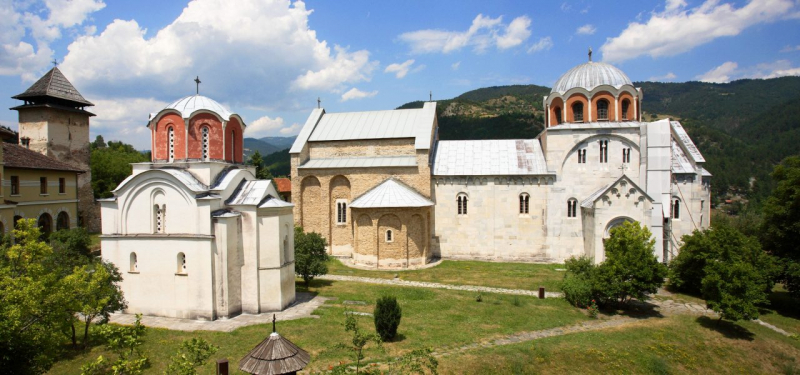
transromanica.com 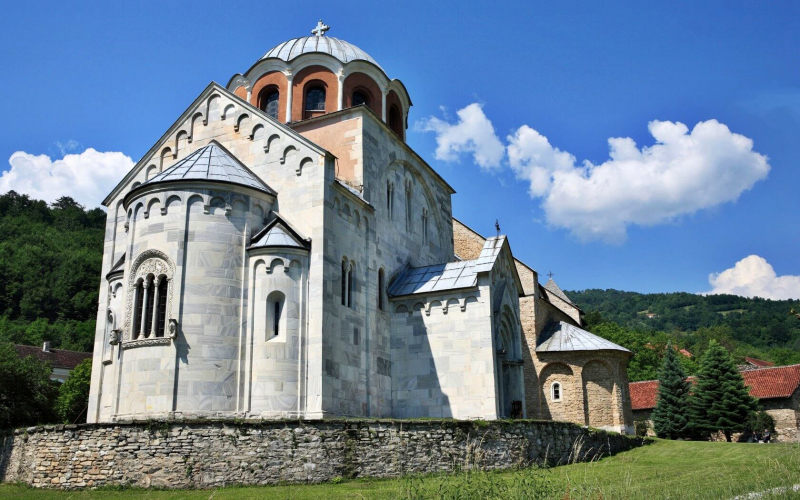
mozaweb.com - Opening time:
-
Unlike many European cities, Subotica's core is dominated by a City Hall rather than a cathedral or a church. The City Hall has become a landmark, the hub, and the emblem of Subotica due to its position, grandeur, and magnificent Hungarian Art Nouveau architecture. It was constructed between 1908 and 1910, with interior ornamentation finished in 1912. It covers roughly 6000 m2 and has a gross floor space of 16000 m2. The tower is 76 meters high with a belvedere at the height of 45.5 meters and an unforgettable view of Subotica and its surrounding.
The arrangement of City Hall is symmetrical, with four inner courtyards/atriums and four entrances. A foyer with a ceremonial staircase carved in marble leads to the first representative level on the north side, where there is a lovely garden and the Blue Fountain. On that floor, there are three Halls: Green and Yellow Halls, which are used by the Grand Prefect and now the Mayor, and a third, central, largest, and most beautiful - Grand Hall, which is the beating heart of Subotica's City Hall.
The Grand Hall is utilized for City Assembly sessions, concerts, marriages, and other major events.It houses the Mayor's Cabinet, City Administration offices and municipal services, historical archives, shops, banks, and other businesses. The building's functionality and modernism, as well as the fusion of several creative disciplines - architecture, painting, and applied arts – are undoubtedly its most essential assets, yet its extravagant adornment is unmistakable. Through patterns of stylized flowers as well as ceramic and wrought iron floral jewelry, Art Nouveau décor is supplemented with a characteristic romantic note of Hungarian folklore. Carved wood, brass fittings, lighting, and ceramic eosin tiles all add to the creative worth and extravagance of this one-of-a-kind structure.
- Entrance fees: Free of charge
- Opening time:
Sunday: Closed
Monday-Friday: 7am - 3pm
Thursay: 8am - 6pm - Recommended duration: 2h 30 min
- Contact: +381 24 626888
- Address: Štrosmajerova 3, Subotica 24000, Serbia
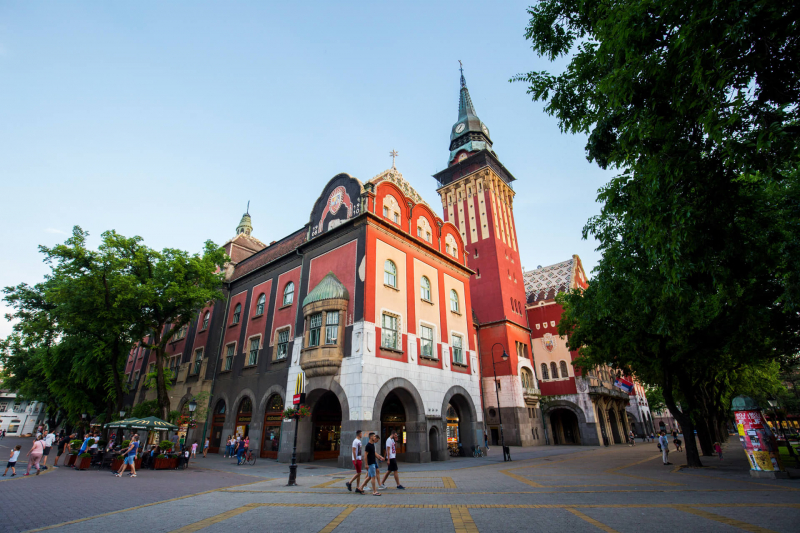
visitsubotica.rs 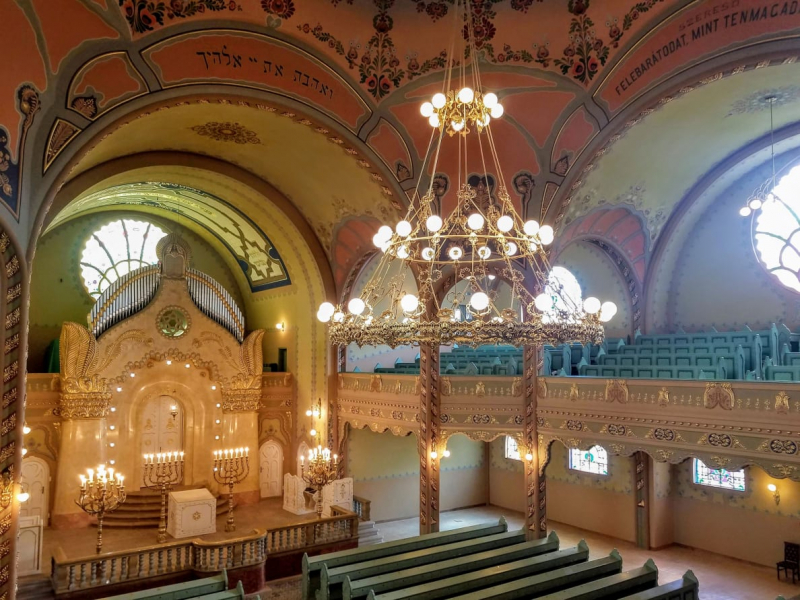
thesrpskatimes.com -
Erdap gorge is a slice of heaven that mixes the empowering beauty of nature with historical relics. The most magnificent canyon in Europe highlighted the most attractive aspects of the Danube and surrounded it with mountains on either side of the Serbian-Romanian border. The Danube is the longest and deepest river in this valley, which is also known as "Iron Gate" due to its force and moodiness.
The Carpathian Mountains separated a few hundred thousand years ago, resulting in the formation of the Carpathian Mountains. The Panonian Sea flooded into the rift, and after the sea receded, the Danube flowed into the 130-kilometer-long valley where it remains to this day.
The Erdap gorge is the most attractive area of the 64,000-hectare erdap National Park, which spans along the Danube's right bank. The Danube reaches its greatest depth (96 m) right here, making it the biggest river depth in Europe and one of the largest river depths in the world. Furthermore, the Danube is the narrowest in its whole journey via Erdap canyon near Kazan (160 m).- Entrance fees: 250 dinar/person
- Location: Đerdap National Park, Serbia
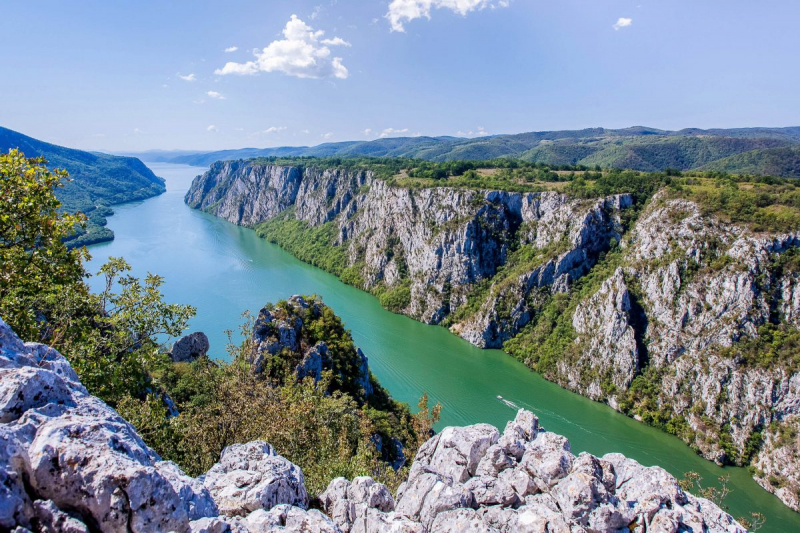
franks-travelbox.com 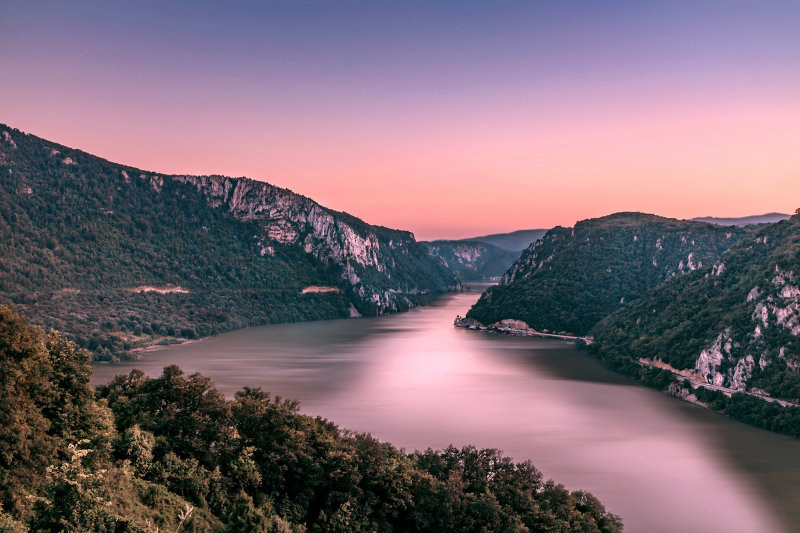
visiteastserbia.rs -
Serbia has a fine line in gruesome historical monuments, but few elicit as much dread and revulsion as the Skull Tower, which is exactly what it claims it is. The name doesn't raise any concerns about the major material utilized to build the structure.
Skull Tower is a 4 m (13 ft) tall structure with human skulls built into the wall. As the massively outnumbered Serbian army was about to lose the Battle of egar in 1809, the commander Stevan Sineli fired at a magazine of cannon powder, killing the surviving men from both sides. To commemorate the triumph, the Ottoman commander ordered the heads of all 952 slain Serbian troops to be severed. The heads were peeled, stuffed, and incorporated into a wall. The structure may still be seen today in a museum building. Many skulls were stolen and buried by family members, while others were destroyed over time, leaving only 54 skulls.
- Entrance fees: 130 dinar
- Opening time:
Sunday: 9am - 12am
Monday: Closed
Tuesday - Saturday: 9am - 6pm - Recommended duration: 1 hour
- Contact: +381 18 222228
- Location: Bulevar Dr Zorana Đinđića, Niš, Serbia
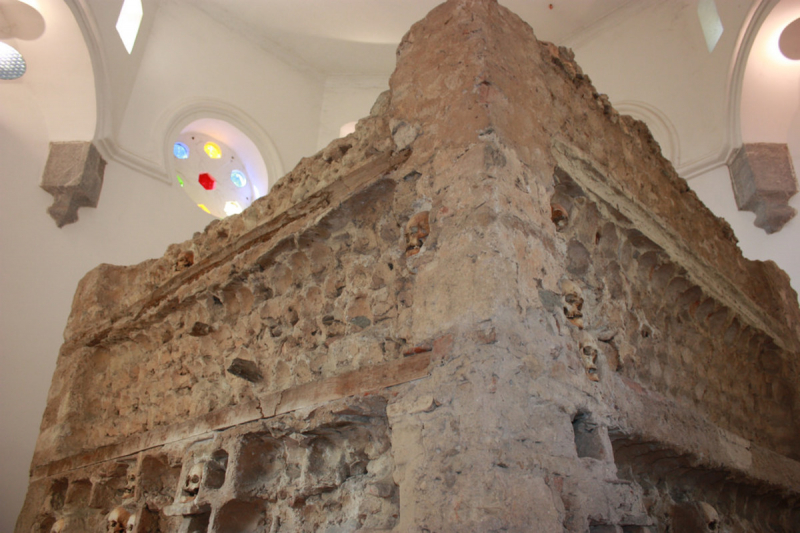
owlcation.com 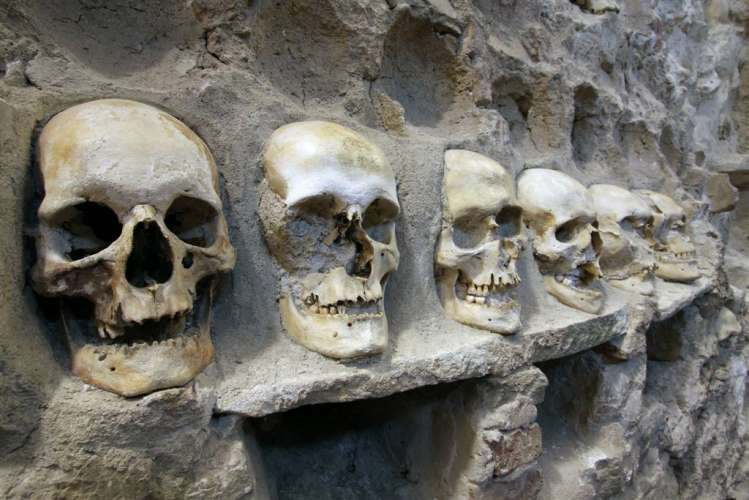
inyourpocket.com -
Have you ever traveled to a spot that was so beautiful and pristine that you couldn't find the words or emotions to describe it? One example is Uvac Canyon. A protected reserve area in Serbia with numerous magnificent lakes and caves, century-old woods, and unusual flora and fauna includes 219 plant species, 24 fish species, and 130 bird species, including the endangered griffon vulture.
The main things to do here are climb the hill to see Uvac Canyon and take a boat ride in Uvac Canyon.
The Uvac river flows magnificently through the 75-square-kilometer Uvac natural reserve in southern Serbia. The beautifully green river flows over sheer limestone cliffs in a zigzag pattern — a natural wonder best appreciated from a high vantage point. It took two hours to get there from Tara National Park, then a speed boat for nearly an hour, and finally a 45-minute stroll before enjoying the magnificent views of the Uvac Canyon.
- Location: Uvac Cayon, Southwestern Serbia
- Tips:
- There are only 2 ways to get to the viewing platform: a 5-hour boat cruise following by a steep 1-hour hike to the top or driving
- Carry a jacket and do not forget to wear comfortable, hiking shoes and carry lots of water because you won’t find anything to buy food or drinks on the way
- Beware of snakes!
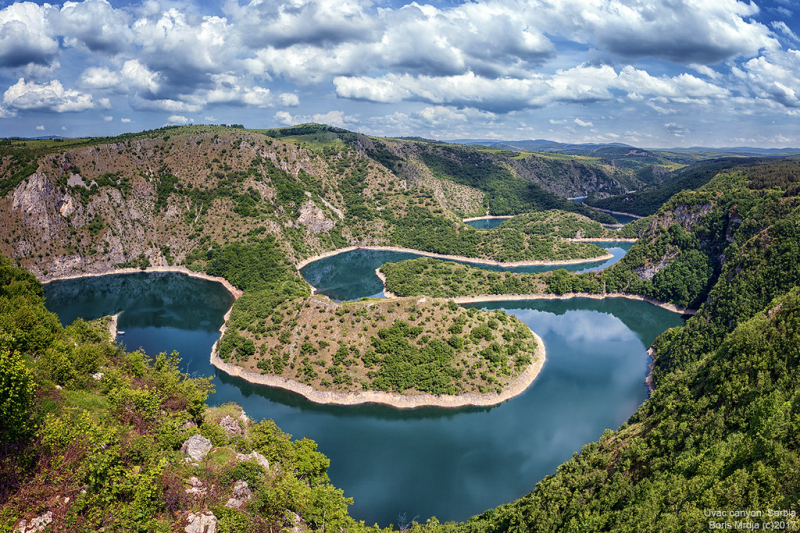
flickr.com 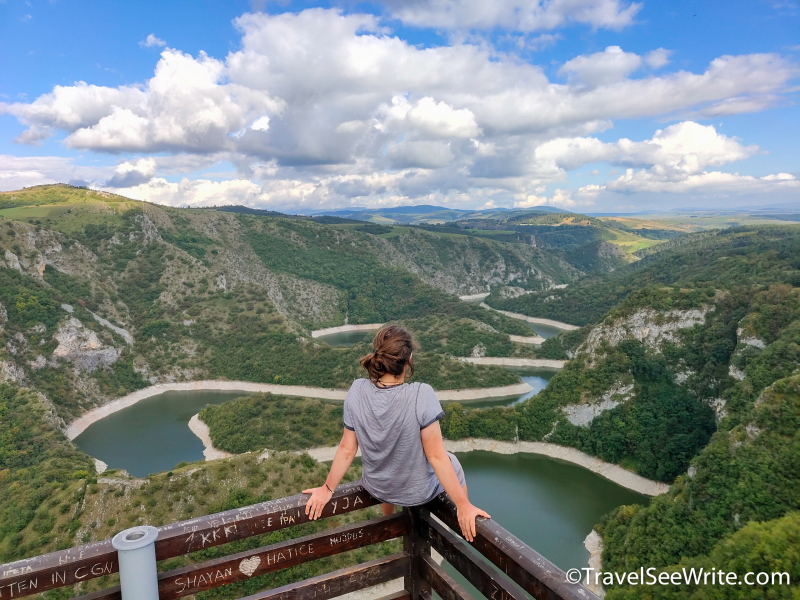
travelseewrite.com -
According to recent discoveries, the Golubac Fortress, which was erected by the Medieval Serbian state around the 14th century, is divided into three compounds that were created in phases. It contains eleven towers, the majority of which began square and some of which got multi-sided reinforcements with the introduction of weapons. Towers were not linked to make defense easier. Inside the stronghold, there were also Serbian Medieval frescoes.
The history of Golubac Fortress has been turbulent. It was the location of a Roman colony prior to its construction. Throughout the Middle Ages, it was the site of several wars, particularly between the Ottoman Empire and the Kingdom of Hungary. It passed through the hands of Turks, Bulgarians, Hungarians, Serbs, and Austrians until 1867, when it was handed up to the Serbian Knez, Mihailo Obrenovi III. It is now a major tourist attraction in the region and a stop on Danube boat trips.
- Entrance fees:
- Parking: motors and cars is 100 dinar, mini buses and vans is 300 dinars.
- Ticket:(includes parking and a visit to the Visitor Centre and the Archaeological Park)
- Zone I (Green zone) a visit to Palace and Towers 9, 8 and 5:
Adult 600 dinar per person
Group tours 450 dinar per person
Seniors 300 dinar per person / Required retirement card - School trips and students 150 dinar per person / Required student ID
- Children under 18 accompanied by an adult : Free of charge
- Zone II (Blue zone- adult visitors only.) a visit to Tower 4, Green Zone:
Adults 1000 dinar/ person - Zone III (Red zone-adults accompanied by a designated guide only) a visit to Tower 7, Green Zone
- Zone IV (Black zone - adults accompanied by a designated guide and with all safety measures in place only) a visit to the Hat Tower (tower 1) and Tower 3, Blue and Green zone
- Zone I (Green zone) a visit to Palace and Towers 9, 8 and 5:
- Opening time:
NOV - FEB: 10am – 2pm
MAR: 10am – 3pm
APR&OCT: 10am – 4pm
MAY&SEP: 10am – 5pm
JUN- AUG: 10am – 6pm
* Closed on Mondays
* Read more about The rules for organizing group visits - Contact:
+381 12 638 794
+381 12 638 798 - Location: Mehane, Serbia
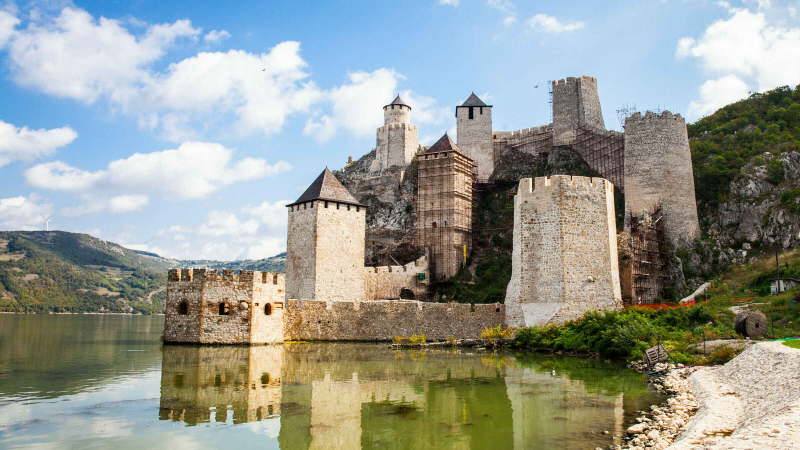
getyourguide.com 
tvrdjavagolubackigrad.rs - Entrance fees:
-
This 13th-century-Žiča-is a treasured component of the heritage bequeathed by Serbia's first King, Stefan the First-Crowned. The king collaborated with the Church of the Holy Dominion and the first Head of the Serbian Church to build the lively holy place, which was designated as a Cultural Monument of Exceptional Importance in 1979. The Monastery of Ia was erected in the Romanesque style, and it has retained the red hue that identifies it to this day since it is a tradition of Mount Athos structures of this type. The portion of the church is made up of a single ship with four pieces, the third of which rises the dome that distinguishes the structure.
Visitors to this famous monastery may wander the attractive grounds and learn more about Serbian Orthodox history.
- Entrance fees: 2 EUR
- Openting times: 7am - 4pm
- Contact: +381 3 6581 6817
- Address: Off 410 Road, Kraljevo, Serbia, 36221
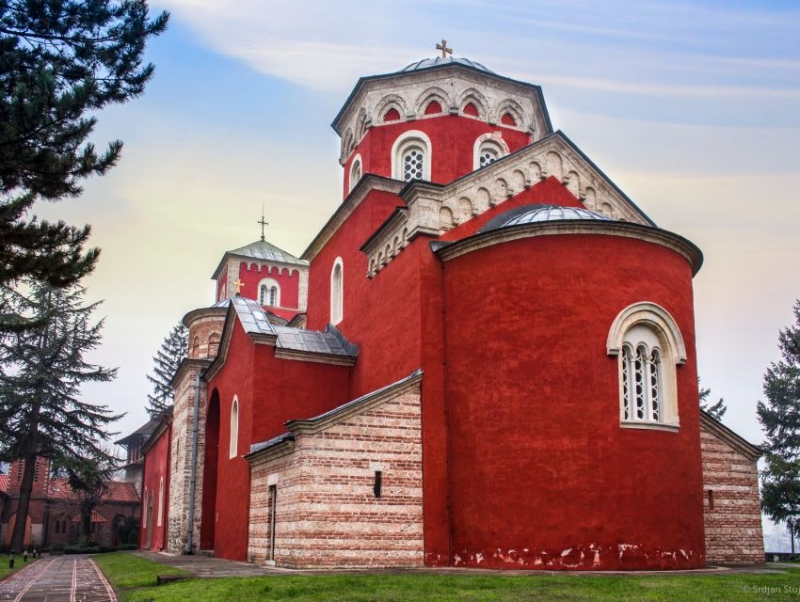
cityseeker.com 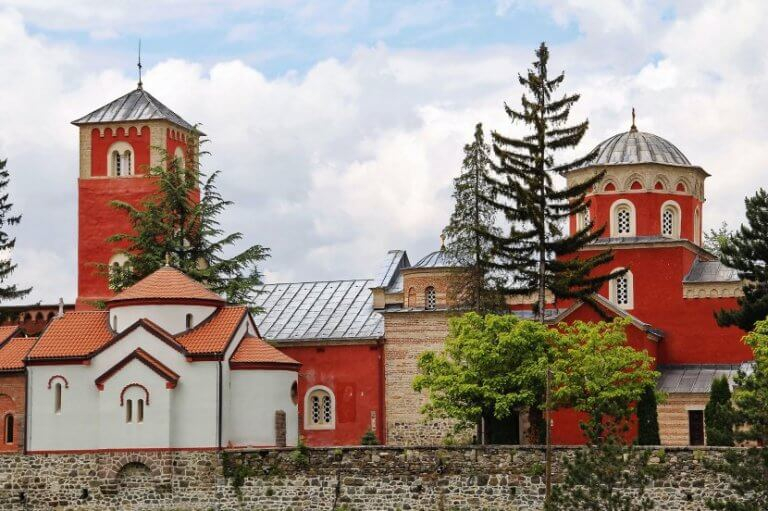
private-tours.rs -
The church on Oplenac Hill is a structure of true beauty and elegance. It was built in the Serbian-Byzantine style.
The church is a five-domed building. It is famed for its mosaics, which include 725 compositions and 1,500 figures constructed from 40 million glass cubes in 15,000 various color tones. The temple's interior length is 30 meters (98 feet), while the arch's height is 27 meters (89 ft). Each narthex is 9 meters (29 feet) wide, as is the central dome's span. The white marble from the Venac mountain was used to make all four fanjades.
The most decorative fanjade is the western fanjade. The church floor was created in Munich from polished marble in a variety of hues. The throne for the King and Queen is raised on a tiny pedestal and made of polished green marble, with a gold mosaic and mother-of-pearl on the rear and a two-headed eagle in the center.
The massive chandelier, 9 meters in diameter, hangs in 8 positions above the pendent beneath the main dome. It weights 1,500 kg and is constructed of molten bronze (3300 lb). A Crown is upside-down in the chandelier (symbolizing the lost Serbian Empire in the battle of Kosovo in 1389).- Address: Oplenac bb, 34310 Topola
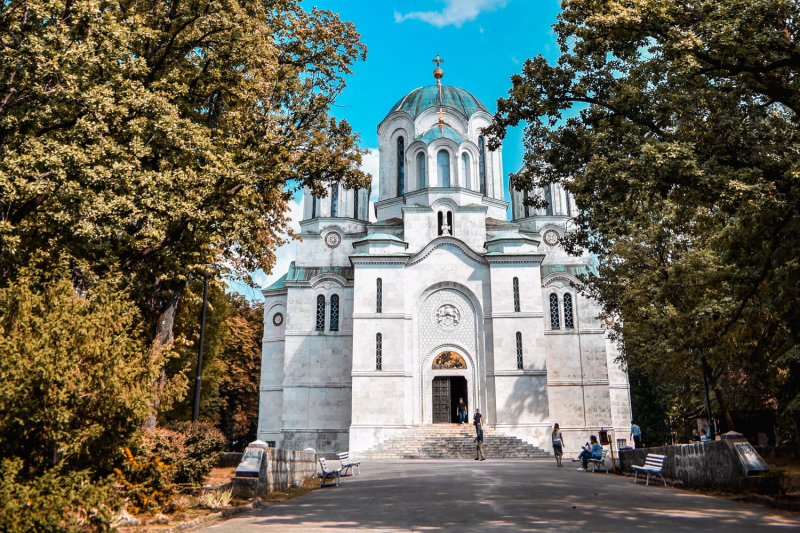
roadaffair.com 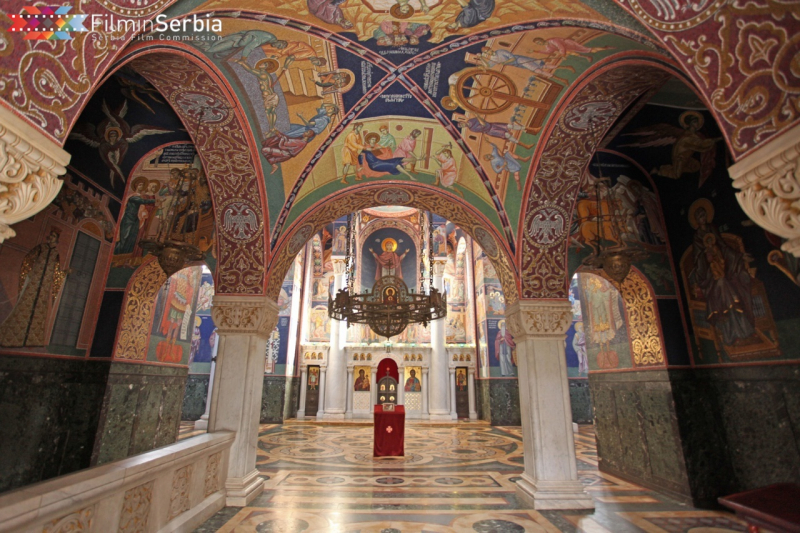
filminserbia.com -
The Petrovaradin Fortress, located on the Danube River in Novi Sad, was formerly a defensive fortress erected in the 18th century. The castle, famous for its network of underground tunnels, played an important role throughout the Austro-Turkish wars. The Reversed Clock Tower is one of the city's most recognizable sights, with the larger hand indicating hours and the smaller hand indicating minutes, as opposed to the traditional clock system. It is constructed in this manner for fisherman who can observe the time from a distance. Although the Petrovaradin Fortress has been extensively restored, much of its original architecture remains. The stronghold also serves as the location for the annual EXIT festival, which has featured some of the greatest stars in the music business such as Guns N' Roses, Snoop Dogg, Fatboy Slim, and The Prodigy.
- Contact: (Tourist Information)
+381 21 42 0066
+381 21 661 7343 - Location: Off Štrosmajerova, Novi Sad, Serbia, 21000
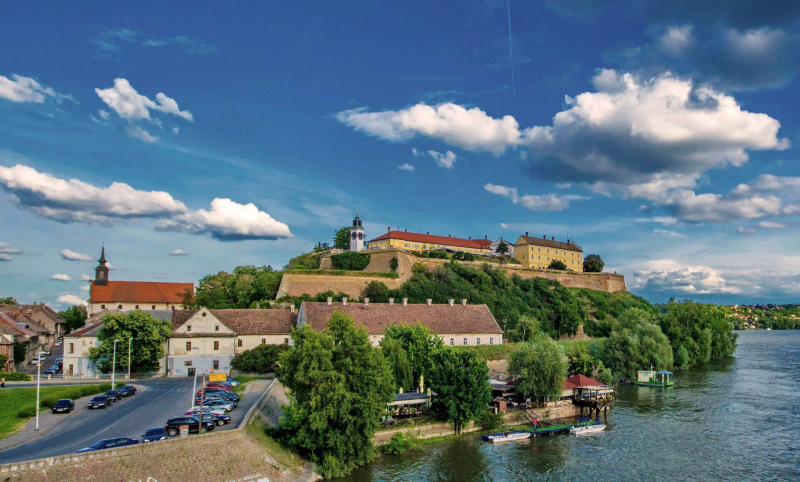
novisad.travel 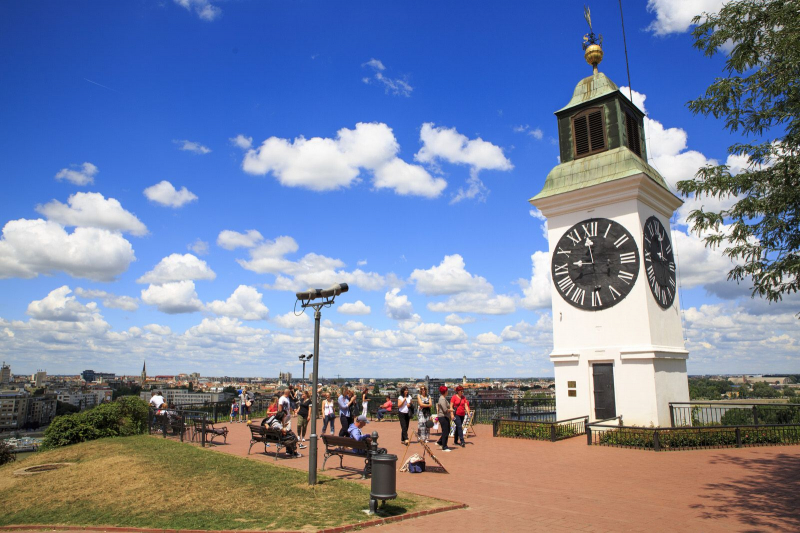
novisad.travel - Contact: (Tourist Information)












